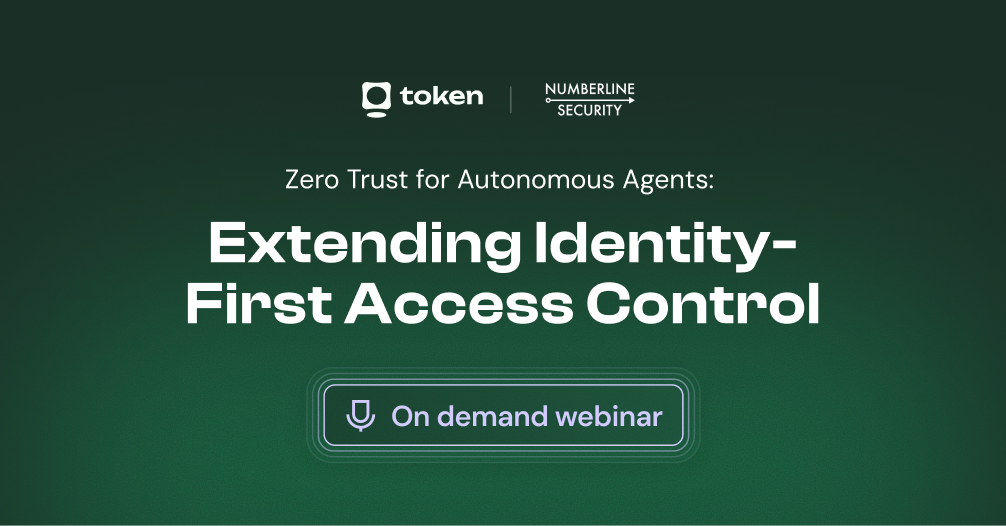Reclaiming Control Over Secrets: Correlating Credentials to NHIs for Safe and Automated Remediation

In fast-moving, cloud-native and AI environments, the number of Non-Human Identities (NHIs), like service accounts, workload identities, ephemeral compute roles, and automation agents, has exploded. These NHIs need credentials to authenticate, but credentials are inherently fragile. They're created rapidly, passed across system boundaries, are long-lived, and stored in a wide array of locations.
The core problem?
Secrets are stored, scanned, and leaked without any reliable association to the identities they authenticate.
To help solve this challenge, Token Security is addressing one of the hardest, least visible problems in identity security: correlating secrets back to NHIs with high confidence, so teams can remediate safely, confidently, and at scale.
The Underlying Issue: Secrets Without Identity Context Are Dangerous
A credential is not an identity, but serves as proof of an identity and facilitates authentication and access to systems, services, applications, and more. In the absence of a federated trust model, services often exchange raw credentials to facilitate machine-to-machine communication. This pattern leads to the creation of fragmented, untracked credentials across a decentralized identity surface.
Security teams are left managing long strings of characters—API tokens, SSH keys, passwords, JWTs—with no way to determine:
- Who or what they belong to
- What systems rely on them
- Whether it’s safe to rotate, revoke, or vault them
In this case, secrets scanning tools do not fully solve the problem. While they can detect patterns that look like credentials, they lack the context to determine if a secret is live, expired, or associated with anything critical.
This is the equivalent of finding a random key and having no idea what lock it opens or if it opens anything at all.
The Challenge in NHI-Driven Environments
The NHI landscape introduces even more complexity:
- Identities are created frequently and programmatically
- Identity systems are decentralized and heterogeneous
- Credential lifecycles are loosely managed or undocumented
- There’s no unified trust plane tying secrets to identity intent
As a result, secrets exist in isolation. Even if stored securely, they lack the metadata or context to determine ownership or potential downstream blast radius.
Our Approach: Building a Secrets-to-NHI Correlation Layer
Token Security maintains a rich inventory of NHIs across on-prem, cloud, dev, and AI environments. Our objective is to build a data correlation layer that maps secrets, regardless of where they are found, to the identities they authenticate, without requiring access to the secret content itself.
- No plaintext secret access: Correlation is done strictly through metadata and environment context, not by ingesting or decrypting secret values.
- Machine learning–driven classification: We use a supervised ML model to associate unstructured and partial metadata to known identities.
- Multi-source visibility: Correlation spans vault entries, scanned secrets, and runtime context (tags, logs, policies, infra state)
- Precision and explainability: Output includes confidence scores and reasoning for each correlation
Token Security Features Used for Correlation:
- Naming conventions and tag alignment
- Ownership metadata and IAM role associations
- Workload usage patterns
- Deployment history and environment references
- Temporal alignment between credential creation and identity instantiation
This approach allows us to logically determine the most likely identity behind each credential and to reason about the access it enables, without the need to hold or analyze the credential value itself.
Why Rule-Based Systems Fail, and Why LLMs Help
Manually correlating secrets to identities using tags and naming rules fails under real-world conditions. The metadata is incomplete, inconsistent, or missing entirely.
To overcome this, we’re developing an LLM-based classification model trained on realistic vault and environment data. The model learns latent associations and soft patterns that traditional parsers miss, especially when names don’t match exactly or context is indirect. The goal is a high-precision system that generalizes across environments and identity systems.
What This Unlocks
A functioning correlation layer between secrets and NHIs enables several high-value workflows:
- Safe rotation: Secrets can be rotated automatically or manually with full confidence in their usage scope
- Leak triage: Found secrets can be mapped to risk based on what they authenticate, not just pattern match
- Vault hygiene: Identify unreferenced or orphaned credentials that can be safely removed
- Access visibility: Enable zero trust enforcement by grounding secrets in authenticated identity access paths
This transforms secrets management from a passive storage model into an active, identity-aware access governance system.
If you’re dealing with secret sprawl, unsafe rotations, or orphaned credentials in an NHI-heavy architecture, we’d love to collaborate. Reach out to learn more or request a demo of the Token Security Platform.
.gif)






